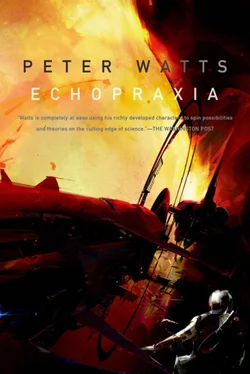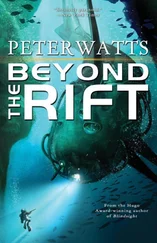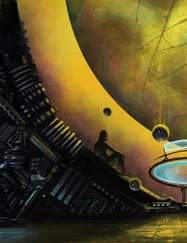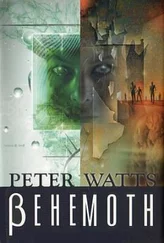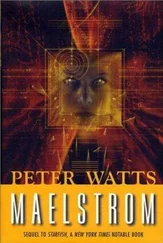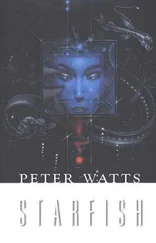Lorenza S. Colzato, Wery P. M. van den Wildenberg, and Bernhard Hommel, “Losing the Big Picture: How Religion May Control Visual Attention,” PLoS ONE 3, no. 11 (November 12, 2008): e3679, doi:10.1371/journal.pone.0003679.
Sara W. Lazar et al., “Meditation Experience Is Associated with Increased Cortical Thickness,” Neuroreport 16, no. 17 (November 28, 2005): 1893–1897.
Laura Saslow, “My Brother’s Keeper?: Compassion Predicts Generosity More Among Less Religious Individuals,” Social Psychological and Personality Science 4, no. 1 (January 1, 2013): 31–38.
Graham Lawton, “The God Issue: Religion for Atheists,” New Scientist 213, no. 2856 (March 17, 2012): 48–49, doi:10.1016/S0262-4079(12)60708-8.
Michael Inzlicht, Alexa M. Tullett, and Marie Good, “The Need to Believe: a Neuroscience Account of Religion as a Motivated Process,” Religion, Brain & Behavior 1, no. 3 (2011): 192–212, doi:10.1080/2153599X.2011.647849.
George Ellis, “Cosmology: Patchy Solutions,” Nature 452, no. 7184 (March 13, 2008): 158–161, doi:10.1038/452158a.
Julian Jaynes, The Origin of Consciousness in the Breakdown of the Bicameral Mind (Boston,: Houghton Mifflin Company, 1976).
Michael S. Gazzaniga, “The Split Brain Revisited,” Scientific American Special Edition 12, no. 1 (August 2, 2002): 27–31.
Jennifer A. Whitson and Adam D. Galinsky, “Lacking Control Increases Illusory Pattern Perception,” Science 322, no. 5898 (October 3, 2008): 115–117, doi:10.1126/science.1159845.
Helen Thomson, “Mindscapes: Stroke Turned Ex-con into Rhyming Painter - Health - 10 May 2013 - New Scientist,” 2013, http://www.newscientist.com/article/dn23523-mindscapes-stroke-turned-excon-into-rhyming-painter.html.
Sandra Blakeslee, “A Disease That Allowed Torrents of Creativity,” New York Times , April 8, 2008, sec. Health, http://www.nytimes.com/2008/04/08/health/08brai.html.
Emma Ashwin et al., “Eagle-Eyed Visual Acuity: An Experimental Investigation of Enhanced Perception in Autism,” Biological Psychiatry 65, no. 1 (January 1, 2009): 17–21, doi:10.1016/j.biopsych.2008.06.012.
Danai Dima et al., “Understanding Why Patients with Schizophrenia Do Not Perceive the Hollow-mask Illusion Using Dynamic Causal Modelling,” NeuroImage 46, no. 4 (July 15, 2009): 1180–1186, doi:10.1016/j.neuroimage.2009.03.033.
Heather Mann et al., “Time-space Synaesthesia–a Cognitive Advantage?,” Consciousness and Cognition 18, no. 3 (September 2009): 619–627, doi:10.1016/j.concog.2009.06.005.
Victoria Gill, “Can You See Time?,” BBC , September 11, 2009, sec. Science & Environment, http://news.bbc.co.uk/2/hi/science/nature/8248589.stm.
Michael Koenigs et al., “Damage to the Prefrontal Cortex Increases Utilitarian Moral Judgements,” Nature 446, no. 7138 (April 19, 2007): 908–911, doi:10.1038/nature05631.
Deheng Wang et al., “Genetic Enhancement of Memory and Long-Term Potentiation but Not CA1 Long-Term Depression in NR2B Transgenic Rats,” PLoS ONE 4, no. 10 (October 19, 2009): e7486, doi:10.1371/journal.pone.0007486.
Ronny Stahl et al., “Trnp1 Regulates Expansion and Folding of the Mammalian Cerebral Cortex by Control of Radial Glial Fate,” Cell 153, no. 3 (April 25, 2013): 535–549, doi:10.1016/j.cell.2013.03.027.
Robert M. Hoffman, “The Multiple Uses of Fluorescent Proteins to Visualize Cancer in Vivo,” Nature Reviews. Cancer 5, no. 10 (October 2005): 796–806, doi:10.1038/nrc1717.
Anonymous, “Autism: Making the Connection,” The Economist , August 5, 2004, http://www.economist.com/node/3061282.
Fabienne Samson et al., “Enhanced Visual Functioning in Autism: An ALE Meta-analysis,” Human Brain Mapping 33, no. 7 (2012): 1553–1581, doi:10.1002/hbm.21307.
Deborah Halber, “Gene Research May Help Explain Autistic Savants - MIT News Office,” MIT’s News Office , 2008, http://web.mit.edu/newsoffice/2008/savants-0212.html.
Fumiko Hoeft et al., “Functional and Morphometric Brain Dissociation Between Dyslexia and Reading Ability,” Proceedings of the National Academy of Sciences 104, no. 10 (March 6, 2007): 4234–4239, doi:10.1073/pnas.0609399104.
B. Sparrow, J. Liu, and D. M. Wegner, “Google Effects on Memory: Cognitive Consequences of Having Information at Our Fingertips,” Science 333, no. 6043 (July 14, 2011): 776–778, doi:10.1126/science.1207745.
V. S. Ramachandran and Stuart Hameroff, “Beyond Belief: Science, Reason, Religion & Survival. Salk Institute for Biological Studies, Nov 5–7, 2006 (Session 4),” The Science Network , 2006, http://thesciencenetwork.org/programs/beyond-belief-science-religion-reason-and-survival/session-4-1.
Jordan Squair, “Craniopagus: Overview and the Implications of Sharing a Brain,” University of British Columbia’s Undergraduate Journal of Psychology (UBCUJP) 1, no. 0 (May 1, 2012), http://ojs.library.ubc.ca/index.php/ubcujp/article/view/2521.
Costas A. Anastassiou et al., “Ephaptic Coupling of Cortical Neurons,” Nature Neuroscience 14, no. 2 (February 2011): 217–223, doi:10.1038/nn.2727.
Kaj Sotala and Harri Valpola, “Coalescing Minds: Brain Uploading-Related Group Mind Scenarios,” International Journal of Machine Consciousness 04, no. 01 (June 2012): 293–312, doi:10.1142/S1793843012400173.
The Pontifical Academy of Sciences, “An Enemy Within: The Bicameral Threat to Institutional Religion in the Twenty-First Century (An Internal Report to the Holy See)” (Internal Report., 2093).
A. B. Newberg and E.G. d’ Aquili, “The Neuropsychology of Religious and Spiritual Experience,” Journal of Consciousness Studies 7, no. 11–12 (November 1, 2000): 251–266.
Andrew B. Newberg et al., “The Measurement of Regional Cerebral Blood Flow During Glossolalia: A Preliminary SPECT Study,” Psychiatry Research: Neuroimaging 148, no. 1 (November 22, 2006): 67–71, doi:10.1016/j.pscychresns.2006.07.001.
M. A. Persinger, “Striking EEG Profiles from Single Episodes of Glossolalia and Transcendental Meditation,” Perceptual and Motor Skills 58, no. 1 (February 1984): 127–133.
Cosimo Urgesi et al., “The Spiritual Brain: Selective Cortical Lesions Modulate Human Self-Transcendence,” Neuron 65, no. 3 (February 11, 2010): 309–319, doi:10.1016/j.neuron.2010.01.026.
Dimitrios Kapogiannis et al., “Neuroanatomical Variability of Religiosity,” PLoS ONE 4, no. 9 (September 28, 2009): e7180, doi:10.1371/journal.pone.0007180.
Читать дальше
